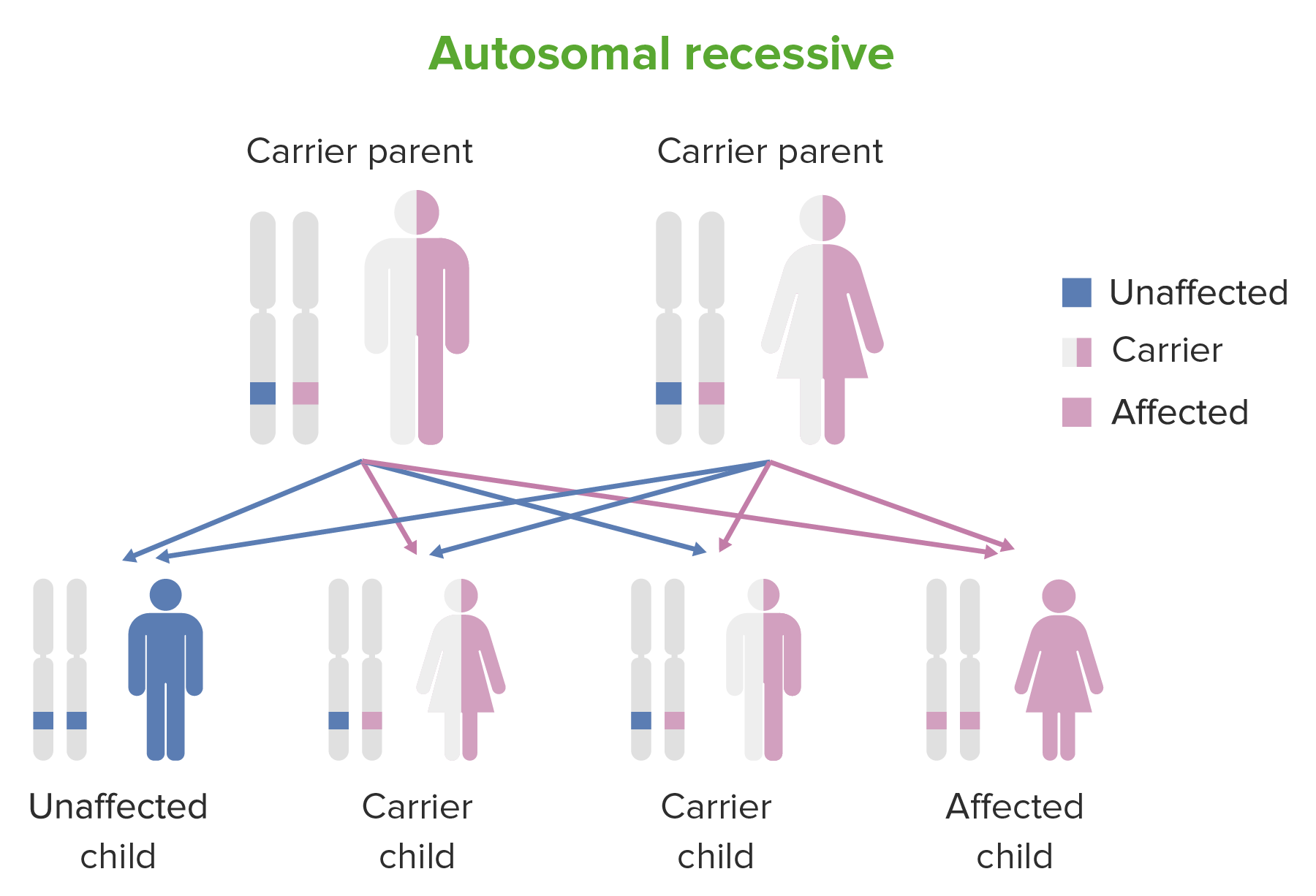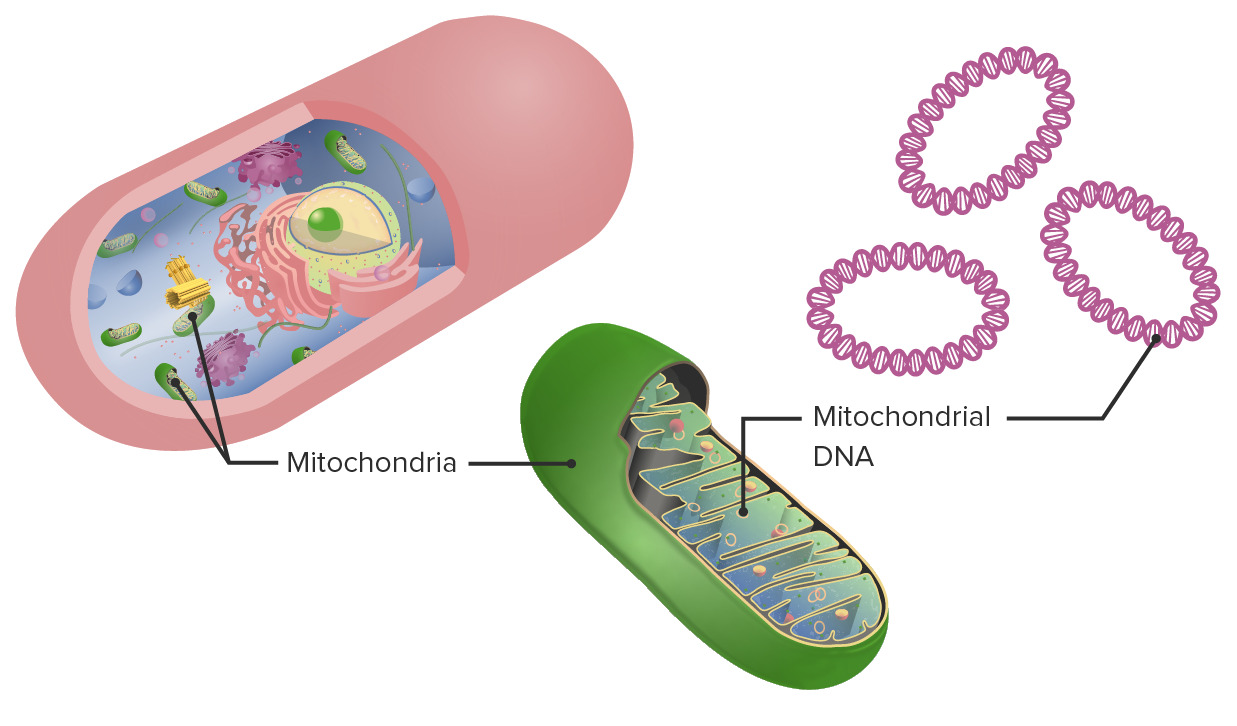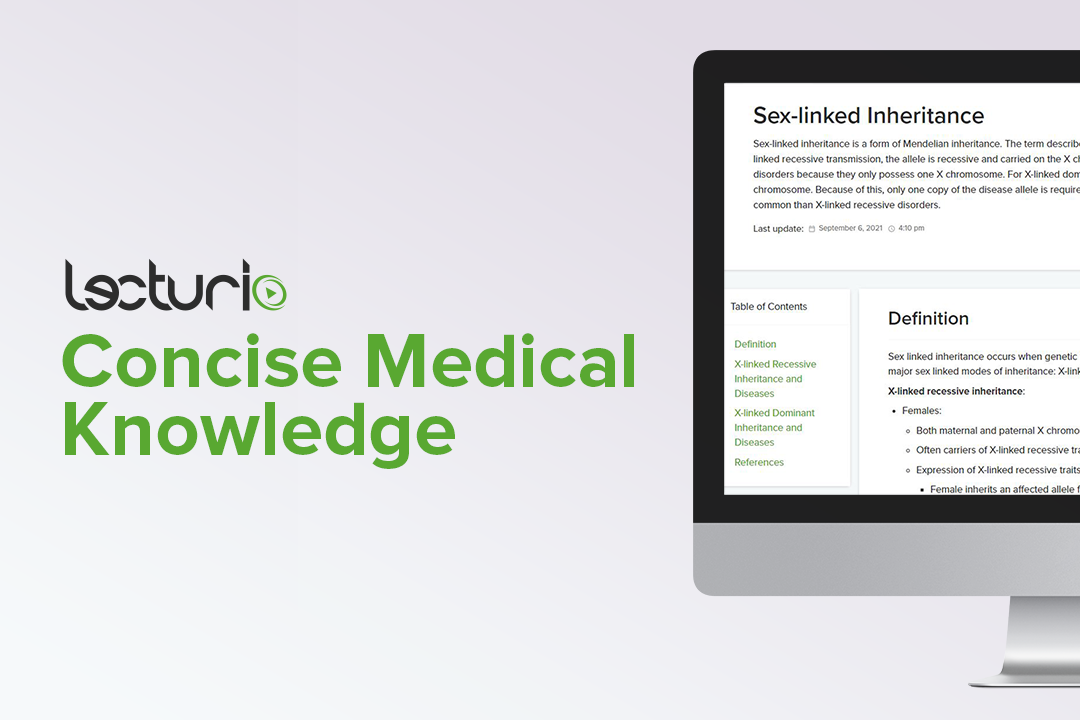Playlist
Show Playlist
Hide Playlist
The Pedigree
-
Slides 02 Pedigrees and Autosomal Patterns of Inheritance SingleGeneDisorders.pdf
-
Download Lecture Overview
00:01 Which brings us into the pedigree which again is sort of the foundation of genetic counseling. 00:07 Now, we have many more techniques other than just the pedigree so we can get into even whole genome screening. But historically, the pedigree is where the foundation lies. 00:20 I want to quickly cover some of these symbols without going through every symbol all the way through here. I’m sure that you’re fairly familiar with some of them. A new term may be the proband. The proband is the first affected family member with the disease. 00:35 The consultant is indicated by an arrow. Sometimes the consultant is the proband as is indicated in this case. The consultant is the person that has come in for a consultation with the genetic counselor or their doctor. Here, we can see that the consultant is indicated simply with the arrow. Then when we have a marriage, we usually use a single bar to connect the two, male and female in order for them to have offspring. You can see we use a vertical line to connect them to their offspring. When we have affected individuals, we use a fully-filled square, so all dependent on whether we’re talking about recessive or dominant. If they are affected, if they display the phenotype, they will have a fully-filled icon, whereas if someone is a carrier, it means they are unaffected but we know that they are carrying the allele. This is commonly shown with a half-filled circle or square. 01:40 It can either be with a dot in the middle or literally a half-filled circle or square. Then when we layout our pedigrees, we have them labeled as generation I and II and III in Roman numerals down the side. 01:56 Then on the horizontal, we’ll use Arabic numerals 1, 2, 3, 4, 5, as many as go across in that layer. 02:05 That way, we can refer to the individuals by where they stand in the pedigree. So, we’ll take consanguinity again using two bars to connect the squares as opposed to a marriage or a union between two unrelated people. That shows up occasionally in pedigrees. Here is an example of a pedigree showing a lot of different things. It’s not really a real pedigree but we are showing many of the symbols. 02:35 I challenge you to take a moment and look at this pedigree and pick out an individual and discuss that. 02:43 To start with, let’s think about what does this arrow mean? Who is this person with the arrow? The person with arrow is in this case, an affected individual who is the proband and consultant. 02:57 So otherwise, the proband is the first person in a family to be identified to have the disease. 03:04 So, if we were looking at say individual number IV, Roman numeral IV and Arabic numeral 4, then we would say their proband, if they were the consultant, their proband would indeed be Roman numeral III, Arabic numeral 5 and that individual that is in this case the proband. Just so we know how to use those terminologies, one of the main jobs of a genetic counselor again is to construct pedigrees. But now we have more and more robust techniques, we can take it even further. Patterns of inheritance as you probably are already familiar are dependent on whether they come from autosomes or whether they come from sex chromosomes. 03:42 They can also come from mitochondrial inheritance,which will be considered later. That clearly comes just from the mother because as you know, only the mitochondria of the egg pass on to the next generation. Then we have dominant versus recessive alleles.
About the Lecture
The lecture The Pedigree by Georgina Cornwall, PhD is from the course Single-Gene Disorders.
Included Quiz Questions
What do double lines, connecting two people, indicate on a pedigree?
- Consanguinity
- Divorce or separation
- Identical twins
- Stillbirth
- No known pregnancy
Which of the following correctly describes a proband?
- The first person in the family affected by the disease.
- The offspring of the first person affected by the disease.
- A marriage between two related people.
- The first ancestor that the consultant can remember.
- The partner of the first affected person with the disease.
Customer reviews
5,0 of 5 stars
| 5 Stars |
|
5 |
| 4 Stars |
|
0 |
| 3 Stars |
|
0 |
| 2 Stars |
|
0 |
| 1 Star |
|
0 |






